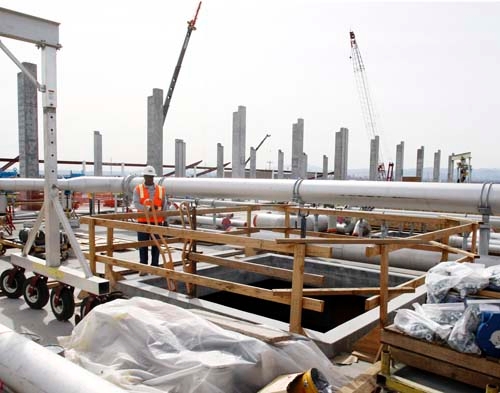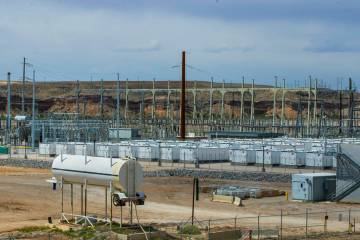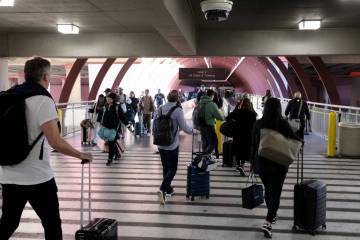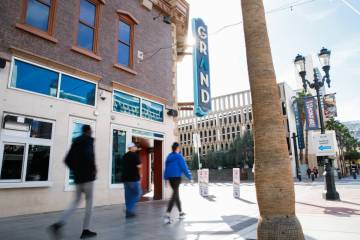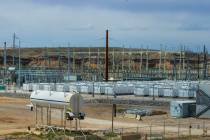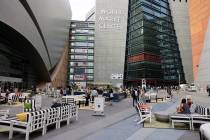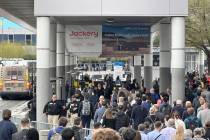Economic index dips in February; local recovery is several months away
After posting small gains over the past few months, the Southern Nevada Index of Leading Economic Indicators tailed off in February to 125.78, indicating that local economic recovery is at least four to six months away, a UNLV economics professor said.
The index fell from 126.38 in January and from 127.23 in February 2009 as six of 10 category series showed negative change from a year ago.
The 842 percent increase in commercial building permit valuation to $151.4 million in December can be laid to permits issued for the new Las Vegas City Hall and does not reflect a turnaround in the commercial construction sector, said Mary Riddel, interim director of the Center for Business and Economic Research at the University of Nevada, Las Vegas.
Other positive numbers came in visitor volume, up 1.5 percent to 2.78 million; convention attendance, up 11.6 percent to 137,959; and residential building permit valuation, up 16.2 percent to $42.7 million.
The research center's construction index continues to fall at a rather alarming rate, Riddel said. Clark County has lost 23,500 construction jobs in the past year, including 4,700 in December alone.
Construction activity is at the lowest level in the history of the index. While the new City Hall drove up commercial building valuation, the number of commercial and residential building permits dropped 26 percent and 18.7 percent, respectively. Only 17 commercial permits and 382 residential permits were issued in December.
The economic index, compiled by the UNLV research center, is a six-month forecast from the month of data, based on a net-weighted average of each series after adjustment for seasonal variation. February's index is based on December data.
The accompanying chart includes several of the index's categories, along with data such as new residents, employment and housing numbers, updated for the most recent month for which figures are available.
"If you look at taxable sales or gaming revenue or McCarran passengers, each series looks like they're trying to bottom out," Stephen Miller, chairman of the UNLV economics department, said Thursday. "Six or 12 months from now we'll see if they've indeed bottomed out."
Economic experts at the national level have said the recession ended in July, but Miller said Nevada's economy will recover more slowly than the national economy.
"We need tourism to come back before the numbers perk up," he said. "Everybody is gloomy about the economy. If there's a surprise this year, it'll be on the positive side, not the negative side."
Riddel said the business activity index appears to be stabilizing at roughly the same level as late 2003, though it's still down 8 percent from a year ago. She points to continued deterioration in taxable sales, gaming revenue and employment.
The index showed an 8.5 percent decline in December's taxable sales to $2.66 billion, a 2.4 percent decline in gaming revenue to $753.2 million and a 7.4 percent decline in total employment to 833,000.
Las Vegas-based economic consultant John Restrepo said it's going to be a slow, plodding recovery for Southern Nevada. The local economy has lost 67,000 jobs since December 2008 and 103,000 jobs since December 2007.
One piece of good news is that approved initial unemployment claims in Clark County have been declining year over year for the last five months, he said.
"Bottom line is we need to see at least six months of steady job growth to be in recovery and we haven't seen that yet," Restrepo said. "In order for us to get back to our peak for jobs, if we started growing now at the rate of growth we had prior to the recession, it would take about three years. And we're not (growing). We're still losing jobs."
Construction spending nationally fell by $5.5 billion in January to $884 billion, its lowest level since June 2003, the Associated General Contractors of America reported. Declining investments in private-sector nonresidential construction and public construction at all levels of government drove the 0.6 percent decline.
"What's clear from this data is that the downturn in nonresidential construction spending is far from over," AGC chief economist Ken Simonson said. "Federal funding for construction is one of the few crutches propping up a deeply wounded construction industry."
The Architecture Billings Index dropped almost three points in January, indicating a continued decline in demand for design services. As a leading economic indicator of construction activity, the index reflects the nine- to 12-month lag time between architecture billings and construction spending.
"Projects are being delayed or canceled because lending institutions are placing unusually stringent equity requirements on new developments," Kermit Baker, chief economist for Washington, D.C-based American Institute of Architects, said in a prepared statement.
"This serious situation is being compounded by a skittish bond market, decreased tax revenues for publicly financed projects and declining property values, all which serve as deterrents for construction activity. Until these factors are resolved, the design and construction industry -- which accounts for roughly 10 percent of GDP and is facing unemployment figures in excess of 20 percent -- will continue to face deteriorating market conditions."
Contact reporter Hubble Smith at hsmith@reviewjournal.com or 702-383-0491.



